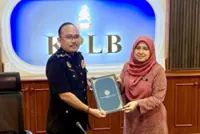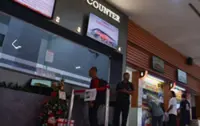Community effort: Some of the coral reef frames being set up in the earlier stages of the programme as students (below) learn about making them.
12,000 fragments laid in sea around Kudat in a reef restoration initiative
KOTA KINABALU: A large-scale reef restoration effort in Sabah has landed in the Malaysia Book of Records after 12,000 coral fragments were laid in the sea around Kudat in what is recognised as the “largest coral fragment planting initiative”.





